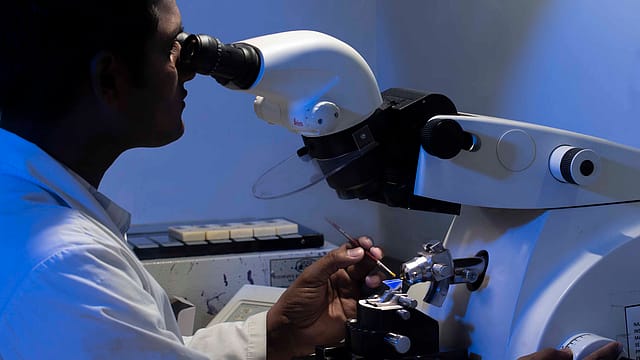Indian diagnostics market set to double to $20 billion by FY26
ADVERTISEMENT

The Indian diagnostics market, now with a size of $10 billion in FY2021, is projected to grow at a compounded annual growth rate (CAGR) of 14% to reach $20 billion by FY26, says a new industry research report.
This growth will be primarily driven by increasing demographics, urbanisation, penetration, and better realisations per tests. The diagnostic industry in India is characterised by a high degree of fragmentation with over 1,00,000 labs. Of the $10 billion worth market, standalone centres account for 48% market share, followed by hospital-based labs with 37% share and national chains accounting for only 5% share. While the pathology segment contributes 57% to the diagnostic market share, radiology accounts for 43% of the market, comprising tests like computed tomography (CT) scans, magnetic resonance imaging (MRI), color doppler ultrasound scans, etc.
This fragmentation poses a challenge in terms of capability, scalability, and quality of labs, but on the other hand, it also provides an opportunity to consolidate newer business models to evolve, says the report, "Diagnostics: Unraveling the Future", brought out by Praxis Global Alliance, a management consulting and advisory firm.
"The pandemic brought in a paradigm shift in the diagnostic market regarding its scope and capacity while emphasizing the need for diagnostics & treatment. There was an increased consumer acceptance of point-of-care testing (PoCT) and home collection where several diagnostics chain players improved their online presence and invested in technology and automation. We also see new business models emerge as the competitive intensity increases," says Aryaman Tandon, managing partner and practice leader, Healthcare, Praxis Global Alliance.
December 2025
The annual Fortune 500 India list, the definitive compendium of corporate performance, is out. This year, the cumulative revenue of the Fortune 500 India companies has breached $2 trillion for the first time. Plus, find out which are the Best B-schools in India.
The report observed that the Indian diagnostic market is significantly under-penetrated - pathology tests per 1,000 population in India is 1,111, versus 5,924 in Brazil, 10,000 in Australia, and 20,958 in the US. The number of CT, MRI tests per 1,000 population in India was 36 compared to 53 in Brazil, 144 in the UK, 192 in Australia, and 407 in the US. The market is highly fragmented and urbanised as standalone centres and hospital-based labs (including government labs) have an 85% share of the market. Urban areas account for 74% of the whole market, though with reasonable penetration in Tier 2 and 3 cities in terms of number of labs.
Specialised tests, which now comprise 15-22% by volume and 40-45% by value, are going to drive growth of the market. Molecular pathology is poised to grow at 35-40% year on year. Wellness tests currently comprises only 1-3% by volume and 10-15% by revenue, but growth is likely to be driven by general wellness and condition-specific monitoring packages.
New business models around teleradiology and telepathology to improve access, quality, and efficiency of diagnostics is an emerging area. Teleradiology was estimated to be a $356 million market in 2020 and is likely to evolve into $700 million market by 2025, growing at a CAGR of 15%. Newer players include computational pathology solution providers and teleradiology service providers. Network of partnerships and supply chain innovations, increased use of technology and digital solutions are also likely to fuel growth. However, key challenges facing the industry include regulatory issues, fragmented market with a low focus on quality, commoditisation and increasing competitive intensity, non-access to specialised resources, and value-conscious Indian customers, said the report.
